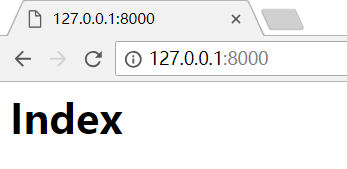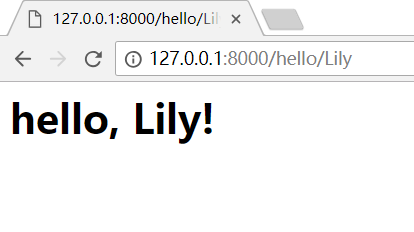Python并发(二)
并发是指一次处理多件事,而并行是指一次做多件事。二者不同,但互相有联系。打个比方:像Python的多线程,就是并发,因为Python的解释器GIL是线程不安全的,一次只允许执行一个线程的Python字节码,我们在使用多线程时,看上去像很多个任务同时进行,但实际上但一个线程在执行的时候,其他线程是处于休眠状态的。而在多CPU的服务器上,Java或Go的多线程,则是并行,因为他们的多线程会利用到服务器上的每个CPU,如果一个服务器上只有一个CPU,那么Java或者Go的多线程依旧是并发,而不是并行。
在上个章节,我们讨论了Python的多线程,在这个章节,我们将通过asyncio包来实现并发,这个包使用事件循环驱动的协程来实现并发
下面,我们看一下asyncio包的简单使用
import asyncio
from time import strftime @asyncio.coroutine
def hello():
print(strftime('[%H:%M:%S]'), "Hello world!")
r = yield from asyncio.sleep(1)
print(strftime('[%H:%M:%S]'), "Hello again!") loop = asyncio.get_event_loop()
loop.run_until_complete(hello())
loop.close()
运行结果:
[17:01:59] Hello world!
[17:02:00] Hello again!
@asyncio.coroutine把一个生成器标记为协程类型,然后,我们就把这个协程扔到EventLoop中执行
现在,我们封装两个协程扔进EventLoop中执行
import threading
import asyncio
from time import strftime @asyncio.coroutine
def hello(id):
print(strftime('[%H:%M:%S]'), 'coroutine_id:%s thread_id:%s' % (id, threading.currentThread()))
yield from asyncio.sleep(1)
print(strftime('[%H:%M:%S]'), 'coroutine_id:%s thread_id:%s' % (id, threading.currentThread())) loop = asyncio.get_event_loop()
tasks = [hello(1), hello(2)]
loop.run_until_complete(asyncio.wait(tasks))
loop.close()
运行结果:
[17:10:51] coroutine_id:1 thread_id:<_MainThread(MainThread, started 5100)>
[17:10:51] coroutine_id:2 thread_id:<_MainThread(MainThread, started 5100)>
[17:10:52] coroutine_id:1 thread_id:<_MainThread(MainThread, started 5100)>
[17:10:52] coroutine_id:2 thread_id:<_MainThread(MainThread, started 5100)>
由打印的当前线程名称可以看出,两个协程是由同一个线程并发执行的。
如果把asyncio.sleep()换成真正的IO操作,则多个协程就可以由一个线程并发执行。
async/await
我们可以用asyncio提供的@asyncio.coroutine可以把一个生成器标记为协程类型,然后在协程内部用yield from调用另一个协程实现异步操作。为了简化并更好地标识异步IO,从Python3.5开始引入了新的语法async和await,可以让协程的代码更简洁易读。async和await是针对协程的新语法,要使用新的语法,只需要做两步简单的替换:
import asyncio
from time import strftime async def hello():
print(strftime('[%H:%M:%S]'), "Hello world!")
r = await asyncio.sleep(1)
print(strftime('[%H:%M:%S]'), "Hello again!") loop = asyncio.get_event_loop()
loop.run_until_complete(hello())
loop.close()
运行结果:
[17:19:55] Hello world!
[17:19:56] Hello again!
下面,让我们用协程并发下载多张图片,这里需要用到aiohttp包,asyncio包只支持TCP和UDP,如果想要使用HTTP协议,需要使用第三方的包,而aiohttp包,则是支持HTTP协议的
import asyncio
import time
import aiohttp
import sys
import os
from time import strftime, sleep POP20_CC = ["pms_1508850965.67096774", "pms_1509723338.05097112", "pms_1508125822.19716710",
"pms_1512614327.2483640", "pms_1525853341.8312102", "pms_1511228654.33099308"] BASE_URL = 'https://i1.mifile.cn/a1' DEST_DIR = 'downloads/' async def get_flag(cc): # <1>
url = '{}/{cc}.jpg'.format(BASE_URL, cc=cc.lower())
async with aiohttp.ClientSession() as session:
async with session.get(url) as resp:
image = await resp.read()
return image def save_flag(img, filename):
path = os.path.join(DEST_DIR, filename)
with open(path, 'wb') as fp:
fp.write(img) async def download_one(cc): # <2>
image = await get_flag(cc)
sys.stdout.flush()
save_flag(image, cc.lower() + '.jpg')
return cc def download_many(cc_list): # <3>
loop = asyncio.get_event_loop()
to_do = [download_one(cc) for cc in sorted(cc_list)]
wait_coro = asyncio.wait(to_do)
res, _ = loop.run_until_complete(wait_coro)
loop.close()
return len(res) def main(download_many):
path = os.path.join(DEST_DIR)
if not os.path.exists(path):
os.mkdir(path)
t0 = time.time()
count = download_many(POP20_CC)
elapsed = time.time() - t0
msg = '\n{} flags downloaded in {:.2f}s'
print(msg.format(count, elapsed)) if __name__ == '__main__':
main(download_many)
运行结果:
6 flags downloaded in 0.25s
<1>处,我们通过async/await将这个生成器声明为协程类型,我们用aiohttp获取远程的图片资源,当发生网络请求的时候,主线程会切换到其他的协程执行
<2>处,当<1>处的网络请求发回响应时,将返回的图片存入本地
<3>处,我们在这个方法里生成多个协程,并提交到EventLoop中运行
上面的程序,还有几处值的修改的地方:
第一处是IO问题,程序员往往忽略一个事实,就是访问本地文件系统会阻塞,想当然的认为这种操作不会受网络访问高延迟的影响,而在上述示例中,save_flag()函数会阻塞客户端代码和asyncio事件循环共用的唯一线程,因此保存图片时,整个应用程序都会被冻结,而一旦受到I/O阻塞,则会浪费掉几百万个CPU周期,所以,就算是本地文件系统的访问,我们也应该把他提到另一个线程去执行,避免造成CPU周期的浪费。
第二处是管理协程的并发数,假设我们这里抓取的不再是仅仅几张图片,而是成千上百,可能我们的链接会断掉,甚至对方的网络因为我们的频繁访问禁止了我们的IP。
所以,我们还要对我们的图片下载代码进行修改
import asyncio
import collections
import contextlib
import time
import aiohttp
from aiohttp import web
import os
from collections import namedtuple
from enum import Enum POP20_CC = ["pms_1508850965.67096774", "pms_1509723338.05097112", "pms_1508125822.19716710",
"pms_1512614327.2483640", "pms_1525853341.8312102", "pms_1511228654.33099308", "error"] BASE_URL = 'https://i1.mifile.cn/a1' DEST_DIR = 'downloads/' DEFAULT_CONCUR_REQ = 3
VERBOSE = True
Result = namedtuple('Result', 'status data')
HTTPStatus = Enum('Status', 'ok not_found error') class FetchError(Exception):
def __init__(self, country_code):
self.country_code = country_code def save_flag(img, filename):
path = os.path.join(DEST_DIR, filename)
with open(path, 'wb') as fp:
fp.write(img) async def get_flag(base_url, cc):
url = '{}/{cc}.jpg'.format(base_url, cc=cc.lower())
async with aiohttp.ClientSession() as session:
async with session.get(url) as resp:
with contextlib.closing(resp): # <1>
if resp.status == 200:
image = await resp.read()
return image
elif resp.status == 404:
raise web.HTTPNotFound()
else:
raise aiohttp.HttpProcessingError(
code=resp.status, message=resp.reason,
headers=resp.headers) async def download_one(cc, base_url, semaphore, verbose):
try:
with (await semaphore): # <2>
image = await get_flag(base_url, cc)
except web.HTTPNotFound:
status = HTTPStatus.not_found
msg = 'is not found'
except Exception as exc:
raise FetchError(cc) from exc
else:
loop = asyncio.get_event_loop()
loop.run_in_executor(None, save_flag, image, cc.lower() + '.jpg') # <3>
status = HTTPStatus.ok
msg = 'is OK' if verbose and msg:
print(cc, msg) return Result(status, cc) async def downloader_coro(cc_list, base_url, verbose, concur_req):
counter = collections.Counter()
semaphore = asyncio.Semaphore(concur_req)
to_do = [download_one(cc, base_url, semaphore, verbose)
for cc in sorted(cc_list)]
to_do_iter = asyncio.as_completed(to_do)
for future in to_do_iter:
try:
res = await future
except FetchError as exc:
country_code = exc.country_code
try:
error_msg = exc.__cause__.args[0]
except IndexError:
error_msg = exc.__cause__.__class__.__name__
if verbose and error_msg:
msg = '*** Error for {}: {}'
print(msg.format(country_code, error_msg))
status = HTTPStatus.error
else:
status = res.status counter[status] += 1 return counter def download_many(cc_list, base_url, verbose, concur_req):
loop = asyncio.get_event_loop()
coro = downloader_coro(cc_list, base_url, verbose, concur_req)
counts = loop.run_until_complete(coro)
return counts def main(download_many):
path = os.path.join(DEST_DIR)
if not os.path.exists(path):
os.mkdir(path)
t0 = time.time()
counter = download_many(POP20_CC, BASE_URL, VERBOSE, DEFAULT_CONCUR_REQ)
elapsed = time.time() - t0
msg = '\n{} flags downloaded in {:.2f}s'
print(msg.format(counter, elapsed)) if __name__ == '__main__':
main(download_many)
运行结果:
error is not found
pms_1511228654.33099308 is OK
pms_1512614327.2483640 is OK
pms_1509723338.05097112 is OK
pms_1525853341.8312102 is OK
pms_1508125822.19716710 is OK
pms_1508850965.67096774 is OK Counter({<Status.ok: 1>: 6, <Status.not_found: 2>: 1}) flags downloaded in 0.41s
<1>处,在网络请求完毕,我们要关闭网络,避免因为网络请求过多最后造成链接中断
<2>处,我们用asyncio.Semaphore(concur_req)设置协程最大并发数,这里我们设置是3,然后再用with (await semaphore)执行协程
<3>处,loop.run_in_executor()方法是用来传入需要执行的对象,以及执行参数,这个方法会维护一个ThreadPoolExecutor()线程池,如果我们第一个参数是None,run_in_executor()就会把我们的执行对象和参数提交给背后维护的ThreadPoolExecutor()执行,如果我们传入自己定义的一个线程池,则把执行对象和参数传给我们定义的线程池执行
使用aiohttp编写web服务器
asyncio可以实现单线程并发IO操作,但asyncio只实现了TCP、UDP、SSL等协议,而aiohttp则是基于asyncio上实现了HTTP协议,所以,我们可以基于这asyncio和aiohttp两个框架实现自己的一个web服务器,代码如下:
import asyncio from aiohttp import web, web_runner CONTENT_TYPE = "text/html;" async def index(request):
await asyncio.sleep(0.5)
return web.Response(body=b"<h1>Index</h1>", content_type=CONTENT_TYPE) async def hello(request):
await asyncio.sleep(0.5)
text = "<h1>hello, %s!</h1>" % request.match_info["name"]
return web.Response(body=text, content_type=CONTENT_TYPE) async def init(loop):
app = web.Application(loop=loop)
app = web_runner.AppRunner(app=app).app()
app.router.add_route("GET", "/", index)
app.router.add_route("GET", "/hello/{name}", hello)
srv = await loop.create_server(app.make_handler(), "127.0.0.1", 8000)
print("Server started at http://127.0.0.1:8000...")
return srv loop = asyncio.get_event_loop()
loop.run_until_complete(init(loop))
loop.run_forever()
运行脚本后,在浏览器输入:
http://127.0.0.1:8000/

如果输入:http://127.0.0.1:8000/hello/Lily,就可以看见如下页面,/hello/后面的name可以替换

Python并发(二)的更多相关文章
- Python并发编程二(多线程、协程、IO模型)
1.python并发编程之多线程(理论) 1.1线程概念 在传统操作系统中,每个进程有一个地址空间,而且默认就有一个控制线程 线程顾名思义,就是一条流水线工作的过程(流水线的工作需要电源,电源就相当于 ...
- python并发编程之multiprocessing进程(二)
python的multiprocessing模块是用来创建多进程的,下面对multiprocessing总结一下使用记录. 系列文章 python并发编程之threading线程(一) python并 ...
- python并发模块之concurrent.futures(二)
python并发模块之concurrent.futures(二) 上次我们简单的了解下,模块的一些基本方法和用法,这里我们进一步对concurrent.futures做一个了解和拓展.上次的内容点这. ...
- python并发编程&多线程(二)
前导理论知识见:python并发编程&多线程(一) 一 threading模块介绍 multiprocess模块的完全模仿了threading模块的接口,二者在使用层面,有很大的相似性 官网链 ...
- python并发编程&多进程(二)
前导理论知识见:python并发编程&多进程(一) 一 multiprocessing模块介绍 python中的多线程无法利用多核优势,如果想要充分地使用多核CPU的资源(os.cpu_cou ...
- Python并发复习1 - 多线程
一.基本概念 程序: 指令集,静态, 进程: 当程序运行时,会创建进程,是操作系统资源分配的基本单位 线程: 进程的基本执行单元,每个进程至少包含一个线程,是任务调度和执行的基本单位 > 进程和 ...
- Python并发编程一(多进程)
1.背景知识(进程.多道技术) 顾名思义,进程即正在执行的一个过程.进程是对正在运行程序的一个抽象. 进程的概念起源于操作系统,是操作系统最核心的概念,也是操作系统提供的最古老也是最重要的抽象概念之一 ...
- 《转载》Python并发编程之线程池/进程池--concurrent.futures模块
本文转载自Python并发编程之线程池/进程池--concurrent.futures模块 一.关于concurrent.futures模块 Python标准库为我们提供了threading和mult ...
- python并发编程之Queue线程、进程、协程通信(五)
单线程.多线程之间.进程之间.协程之间很多时候需要协同完成工作,这个时候它们需要进行通讯.或者说为了解耦,普遍采用Queue,生产消费模式. 系列文章 python并发编程之threading线程(一 ...
- python并发编程之进程、线程、协程的调度原理(六)
进程.线程和协程的调度和运行原理总结. 系列文章 python并发编程之threading线程(一) python并发编程之multiprocessing进程(二) python并发编程之asynci ...
随机推荐
- Sql server 查询指定时间区间工作日数、休息日数等日期操作
1.查询指定时间区间的工作日 这个主要难点是法定节假日,国家的法定节假日每年都不一样,还涉及到调休,所以我们设计一个假日表.主要字段有年份,类型(是否调休),假期日期.如下: CREATE TABLE ...
- 3285 转圈游戏 2013年NOIP全国联赛提高组
3285 转圈游戏 2013年NOIP全国联赛提高组 时间限制: 1 s 空间限制: 128000 KB 题目等级 : 钻石 Diamond 题目描述 Description n 个小伙伴 ...
- so文件动态加载注意事项
动态加载是指将so文件存放于服务器,在需要用的时候,通过服务器下载到本地,然后加载. 需要注意的: 手机cpu架构,不同的架构运行不同的so 解决方法: 1,欺骗性: 如果so架构不全,就在apk打包 ...
- The Mythical Man-Month
大家所熟知的Windows XP操作系统,源代码行数已经达到40百万行.为了连接用户和计算机底层硬件,庞大操作系统这一层太过于复杂,没有一个人能完全理解它如此数量的所有代码,而多人的合作开发又需要它被 ...
- AD 域复制FRS 迁移到DFSR
假设您尝试将在先前版本的Windows Server上运行的某个Active Directory域控制器(DC)升级到Windows Server 2019. 您可能会看到以下错误: “副本验证失败. ...
- 在windows 上编译部署Rap2
在windows 上编译部署Rap2 引言 安装需要的环境 安装后端站点 创建数据库 在全局安装pm2 和 typescript 配置mysql,redis 数据库链接配置 初始化 编译 初始化数据库 ...
- python爬虫之路——初识lxml库和xpath语法
lxml库:是xml解析库,也支持html文档解析功能,实用功能:自动修正补全html代码. 使用流程:①导入lxml中的etree库,②利用etree.HTML(文件名)或etree.parse(本 ...
- python爬虫之路——初识爬虫原理
爬虫主要做两件事 ①模拟计算机对服务器发起Request请求 ②接收服务器端的Response内容并解析,提取所需的信息 互联网页面错综复杂,一次请求不能获取全部信息.就需要设计爬虫的流程. 本书主要 ...
- noip模拟赛#15
#15 T1:a[i]>=a[i/2].输出a的最大字典序 =>可以发现这是二叉树的情况那么就先预处理出每个点有多少个儿子然后递归处理就可以了. #include<cstdio> ...
- 怎么在WEBSTORM中设置代码模板 Live Templates
怎么在WEBSTORM中设置代码模板 Live Templates setting 里面 https://www.cnblogs.com/xinzaimengzai/p/9938464.html
